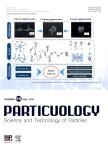Gelation of polymeric nanoparticles
Gelation of polymeric nanoparticles作者机构:Institute for Chemical and Bioengineering.Department of Chemistry and Applied BiosciencesETH Zurich8093 ZurichSwitzerland
出 版 物:《Particuology》 (颗粒学报(英文版))
年 卷 期:2014年第12卷第3期
页 面:1-11页
核心收录:
学科分类:07[理学] 070304[理学-物理化学(含∶化学物理)] 0817[工学-化学工程与技术] 0805[工学-材料科学与工程(可授工学、理学学位)] 0703[理学-化学] 0702[理学-物理学]
主 题:Structured material Fractal Gelation Gel Polymer
摘 要:We review how, starting from polymeric nanoparticles, to generate clusters of fractal morphology and to expand the entire space and interconnect to form gels, through either Brownian motion or intense shear-induced aggregation. In the case of Brownian motion-induced gelation, specific techniques developed to obtain uniform structure of gels under both reaction-limited and diffusion-limited cluster aggregation conditions have been described. In the case of intense shear-induced gelation as a newly developed technique, our focus is on its principle, theoretical development and advantages with respect to Brownian motion-induced gelation in practical applications. We consider gelation of both rigid and soft particles. As a physical process, the bonding between the particles within gels is owed to van der Waals attractions, thus being easily broken. However, in the case of soft particles that can coalesce upon contact, the coalescence can allow the particles to stick together forming permanent gels. In this case, the gel structure can be controlled by controlling the degree of coalescence. Techniques used to control the degree of coalescence have also been described.



